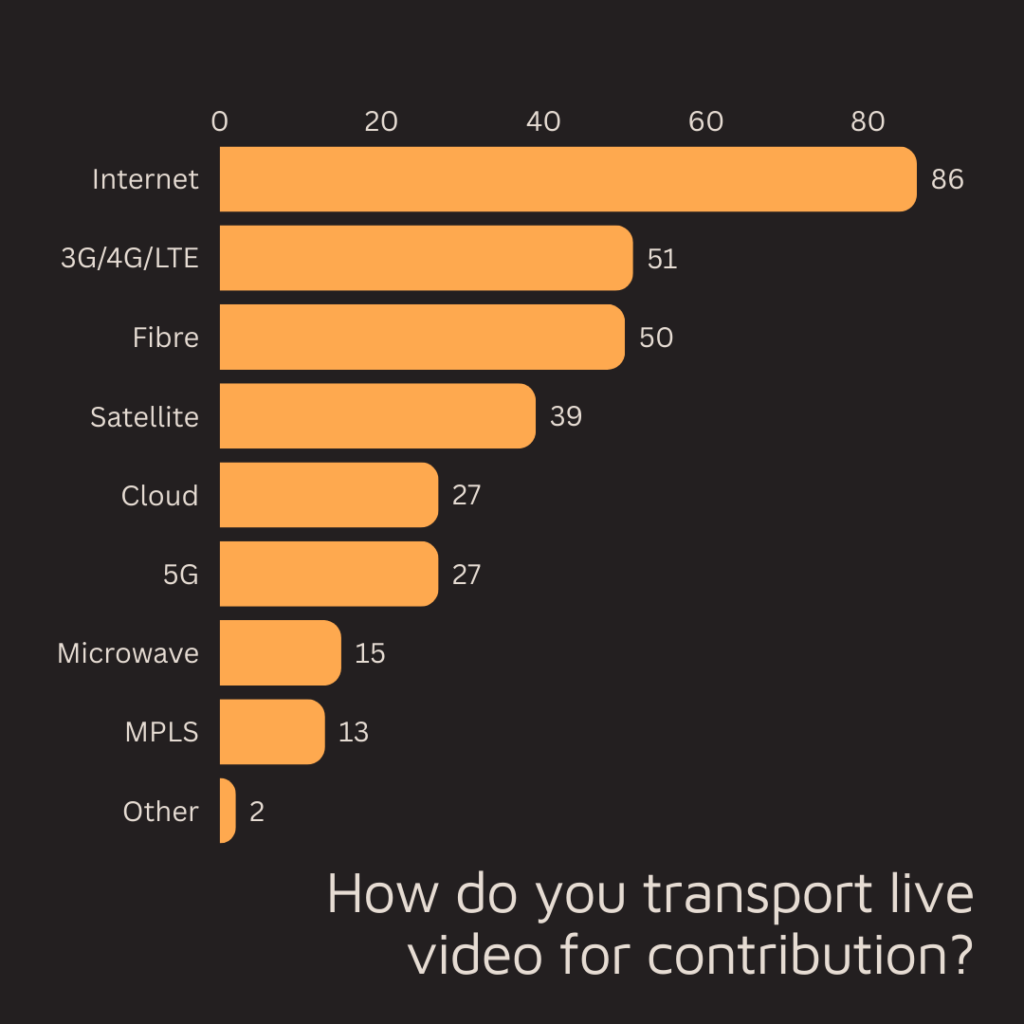Secure Reliable Transport (SRT)
Over 700 broadcast industry professionals recently participated in the 2023 Broadcast Transformation Survey. The Haivision Report from this survey revealed some particularly interesting trends. 86% of participants use the internet to transport live video for contribution while 51% still use 3G & 4G cellular services, closely followed by fibre transmission which is used by 50% of participants. Satellite services are used by 33%, then came Cloud & 5G which are used by 27% each.

Of the broadcast professionals surveyed, 75% leverage hardware video encoding with 58% utilising software video encoders for broadcast contribution. The increase in the use of cloud-based solutions over the years is transforming the industry with new technologies that improve teams’ workflows.
When we talk about cloud-based solutions, we refer to applications, storage, on-demand services and resources accessed via an internet connection through another provider’s shared cloud infrastructure.
Among the benefits of these solutions are how projects can be scaled up and down quickly in response to audience demands; rapid deployment; remote access to collaborate from anywhere; transcoding and streaming.
*Read the complete report here.
Streaming protocols
The first Real Time Streaming Protocol (RTSP) was designed in 1998 for multiplexing and packetising multimedia transport streams such as interactive video and audio. RTSP is still commonly used in entertainment and communication systems due to its reliability.
However, different protocols have been created targeting all industries through the years. SRT, which stands for Secure Reliable Transport, is one of the most popular transport systems in the broadcast field, mainly due to its reliability and security over the Internet.
This open-source video transport protocol, designed by Haivision, streams live video over IP with low end-to-end latency. It’s also a flexible and scalable solution for secure routing of live video streams. Some of the features include:
Broadcast video routing
As a flexible and scalable solution for secure routing of live video streams across different IP networks, SRT includes Haivision’s Path Redundancy feature to ensure uninterrupted live IP video streaming of your premium content.
Protocol version
SRT Gateway performs live video routing and protocol conversion in real-time, ensuring optimal video quality, even when used in a complex workflow environment. It’s designed for remote contribution, backhaul, return feeds, bi-directional interviews and content distribution for international syndication.
Network bridging
SRT is engineered to provide a high-quality and low-latency video whether you are routing live content across a LAN, WAN, MPLS, the internet, or any combination of networks.
Interoperability
As it supports different source and destination points over any network, SRT converts between streaming protocols, including MPEG, RTP, RTMP, RTSP, and HLS protocols.
Firewall traversal
One of the benefits of SRT is its ability to access streams while adhering to network security policies, reducing the need for IT intervention.
Contact us here.
Contact our expert team
Our technology experts love solving problems. In fact, we often brag that it’s what gets us out of bed in the morning.
Email or call our customer service team to open up endless possibilities for your next project.


